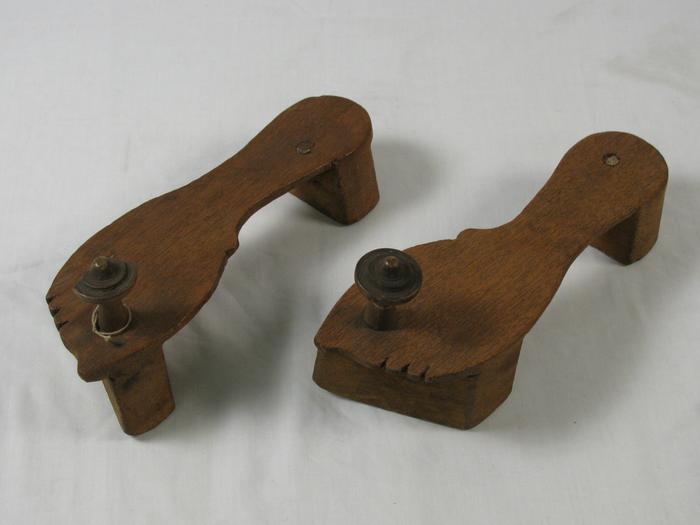Comments and Tags
Be the first to comment on this item!
World Cultures
Asian
Clothing and Accessories
Footwear ➔ Sandals (Paduka)
Identifier:
2011.17.9Description:
These toe knob sandals, called paduka, are made of wood in the shape of a footprint and feature turned pegs between the first and second toe as well as heightened platforms. Feet and shoes hold a special place in religious and social life. Within the confines of the geographical region, the religion, social status, and sex of the wearer, Indian footwear shows an enormous diversity in styles and materials. These range from simple leather thong sandals, or chappals, to ceremonial paduka or toe knob sandals made of silver, iron, and even ivory. In Northern India, the curled toe and open back is a common feature of footwear, as is the intricate metallic embroidery. Because the foot is considered an object of beauty and eroticism, much decoration and jewelry, including anklets and toe rings, is used to embellish women's feet. Likely because of their association with fertility and humility, feet and sandals also feature prominently in Hindu mythology. The God Vishnu's feet, Vishnu-pada, are considered to be the representation of the deity himself.These sandals were likely collected by John Banninga who worked with the Messengers of Hope in Southern India. The Messengers of Hope was an organization of Hope College alumni that operated formally from about 1907 to 1915. Consisting of 25-50 members, they traveled to Asia, India, Africa, and the Middle East doing missionary work and often collected items from the communities in which they worked to send back to Hope College in the hope of inspiring future generations of missionaries. The Grand Rapids Public Museum has a small collection of these items to tell the story of the Messengers of Hope.
Date:
circa 1910Materials:
WoodDimensions:
4" h 9.5" w 3" dCurrent Location Status:
In StorageCollection Tier:
Tier 2Source:
Gift of Hope CollegeExhibit/Program:
Be Curious (October 1 2013 – March 1 2015)Rotating display of recently accessioned artifacts.
